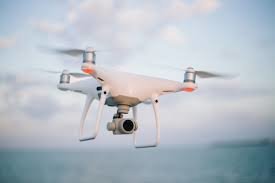Neshoba Central to add drone program in the Fall
A group of students graduating from Neshoba Central High School in 2022 could quite possibly go directly into the workforce as certified drone pilots, thanks to a new program being added next fall.
The new drone program will be embedded into others at Neshoba Central such as agriculture, digital media, JROTC and engineering. The new program coincides with the school district’s mission for all students to graduate both college and career ready with courses, certifications and external opportunities beyond a high school diploma.
Neshoba Central High School Principal Jason Gentry said the school would love to have a standalone drone program, but lacks the needed personnel at the present time.
“We are going to try to embed it with programs that we already have,” he said. “For example, Capt. Regan Kieff is going to embed it with his JROTC program.”
The ultimate goal is to get participating students certified and licensed through the Federal Aviation Administration so they can fly drones.
Superintendent of Education Lundy Brantley said the drone certification program “is another tool in our toolbox to give our students opportunities for great careers. We are always working with a future focused mindset to enhance our students' education experience.”
In order to fly a drone under the FAA's Small UAS Rule (Part 107), a person, 16 years or older, must obtain a Remote Pilot Certificate from the FAA. This certificate demonstrates that they understand the regulations, operating requirements and procedures for safely flying drones commercially.
Working through the Mississippi Department of Education, administrators and others at Neshoba Central began researching curriculums, which include flight time, for drone programs.
Now with federal stimulus monies and potential grants through MDE, the new program is coming to fruition, Gentry said.
He believes the students who succeed in the program will have numerous job opportunities right out of high school, noting that a Jackson television station recently paid pilots $1,500 to $2,000 to go up and take photos/videos during the recent Pearl River flooding.
“Many of our engineering students are not so much wanting to fly drones but wanting to build them,” he said. “Some of our stimulus money will allow us to not only buy drones but also materials to build drones.”
One current senior digital media student at Neshoba Central has already obtained his pilot license and has created his own small company.
“He goes out and gets aerial pictures and videos for church camps and youth groups,” Gentry said, noting that he also did a video for the school district’s superintendent for a Mississippi School Board Association presentation.
The one-year certification process ends with a 60-question test, which must be completed and passed within two hours. That is followed by a background check.
Capt. Kieff, who is a 22-year veteran of the Marine Corps, said most people don’t realize that drones are connected to a number of jobs these days, pointing to the energy sector, agriculture and medical field, among others.
Drones are used to fly along high power lines looking for problems as well as by realtors to fly properties, he said.
“It’s huge in agriculture because they fly over crops a lot and survey for potential crop dusting,” Kieff said. “It’s really big in the medical sector.”
Working with Hinds Community College’s drone program, Kieff learned about a mass casualty drill where a drone was used to communicate with a doctor over his computer.
“The doctor was able to triage and see how to treat each patient from a laptop,” he said. “He typed in a code and the first aid box under the drone opened a certain compartment for a particular medication that a person onsite administered. That is one really cool story that I like to tell about drones in the workforce.”
Kieff also pointed out that Ingalls Shipbuilding on the Coast uses drones to fly over newly built ships to visually examine welded seams to ensure their integrity.
Drones today can be the size of a full-size aircraft, he said.
“These students will hold the same license you get as a regular private pilot flying a Cessna aircraft,” he said. “They will be commercially flying an unmanned system.”
Kieff and Gentry said the targeted audience for the new drone program will be upcoming juniors and seniors.

